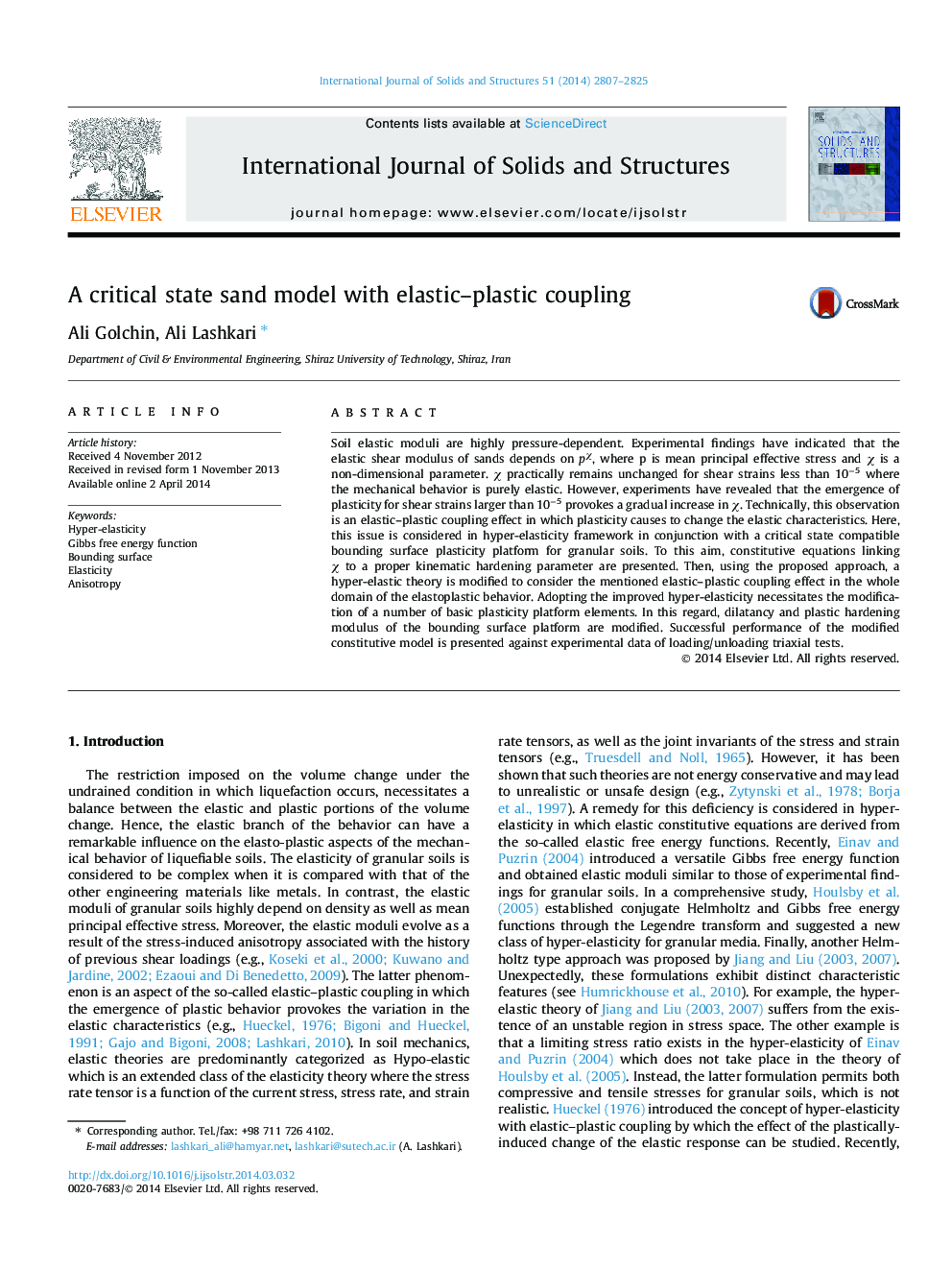| Article ID | Journal | Published Year | Pages | File Type |
|---|---|---|---|---|
| 277640 | International Journal of Solids and Structures | 2014 | 19 Pages |
Soil elastic moduli are highly pressure-dependent. Experimental findings have indicated that the elastic shear modulus of sands depends on pχ, where p is mean principal effective stress and χ is a non-dimensional parameter. χ practically remains unchanged for shear strains less than 10−5 where the mechanical behavior is purely elastic. However, experiments have revealed that the emergence of plasticity for shear strains larger than 10−5 provokes a gradual increase in χ. Technically, this observation is an elastic–plastic coupling effect in which plasticity causes to change the elastic characteristics. Here, this issue is considered in hyper-elasticity framework in conjunction with a critical state compatible bounding surface plasticity platform for granular soils. To this aim, constitutive equations linking χ to a proper kinematic hardening parameter are presented. Then, using the proposed approach, a hyper-elastic theory is modified to consider the mentioned elastic–plastic coupling effect in the whole domain of the elastoplastic behavior. Adopting the improved hyper-elasticity necessitates the modification of a number of basic plasticity platform elements. In this regard, dilatancy and plastic hardening modulus of the bounding surface platform are modified. Successful performance of the modified constitutive model is presented against experimental data of loading/unloading triaxial tests.
